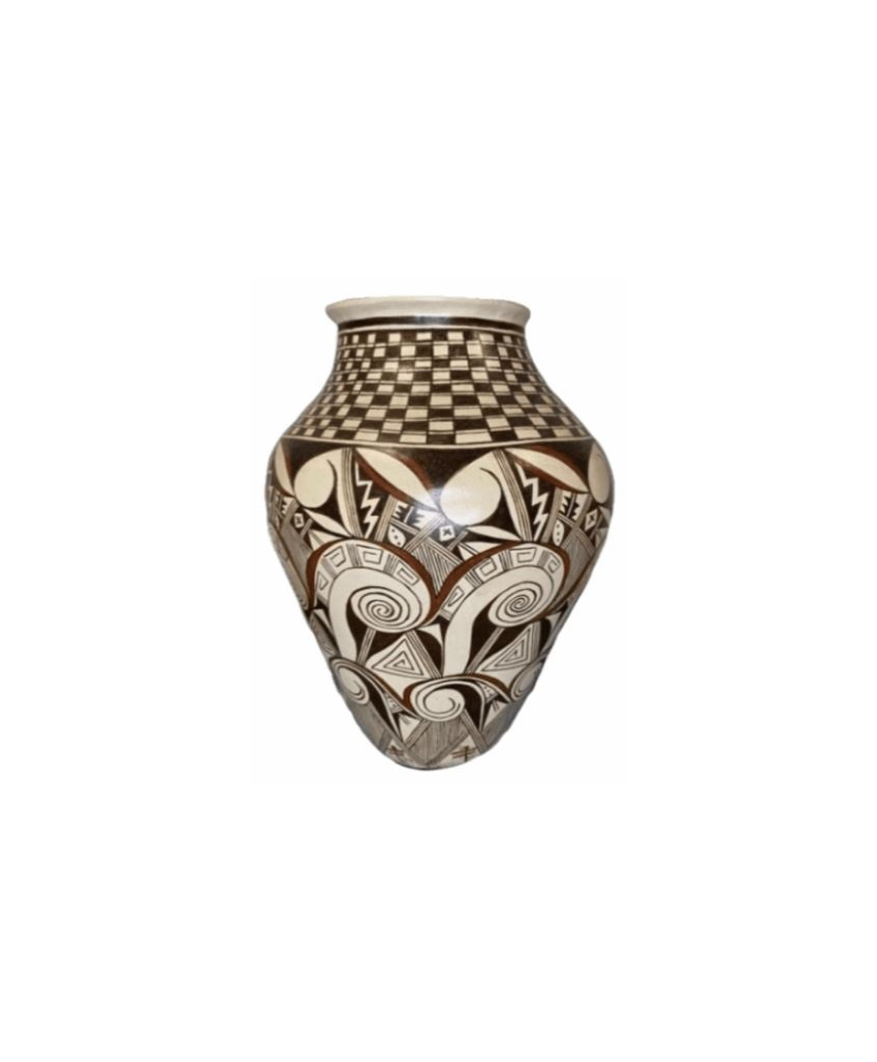Kachina Dolls: Guardians of Tradition in Hopi Artistry
Nestled within the ancient traditions of the Hopi people lies a cherished and revered art form—the Kachina dolls. These exquisitely crafted figures represent
spiritual beings and embody the essence of Hopi beliefs, serving as guardians of tradition and storytellers of a culture steeped in spirituality and reverence
for nature.
The origins of Kachina dolls trace back through centuries of Hopi history, entwined with the spiritual fabric of the community. Far more than mere toys, these
dolls hold deep religious significance, symbolizing the benevolent spirits known as Katsinam, integral to Hopi religious ceremonies.
The Katsinam are divine messengers believed to intercede with the deities to ensure the well-being and prosperity of the Hopi people. Each Kachina represents
a specific spirit, with its unique attributes and responsibilities within the Hopi cosmology. From the nurturing Corn Maiden to the powerful Sun Kachina, each
figure embodies elements of nature, seasonal changes, and ancestral wisdom.
Hopi artisans, often referred to as Kachina carvers, meticulously craft these dolls using traditional methods passed down through generations. The process
begins by hand-selecting cottonwood roots, believed to possess a spiritual essence that imbues the dolls with authenticity and connection to the natural world.
The carving itself is a labor of love and reverence. With skilled hands and a deep understanding of the spiritual significance behind each figure, artisans carve
and shape the wood, infusing life into the form of the Kachina. Careful attention is paid to every detail—the intricate headdresses, symbolic patterns, and vivid
colors—all conveying the essence and role of the specific Katsina.
The vibrant colors adorning the Kachina dolls hold profound meanings within Hopi culture. Each hue represents a particular element of nature, a season, or a
spiritual attribute. Through these colors, the artisans weave a visual narrative, enriching the dolls with layers of symbolism that echo the interconnectedness
of all living beings in the Hopi worldview.
Furthermore, the creation of Kachina dolls extends beyond craftsmanship; it embodies a sacred responsibility entrusted to the artisans. The carving and painting
process is accompanied by prayers and ceremonies, ensuring the dolls are not merely objects but vessels carrying the spiritual essence of the Katsinam.
Despite the passage of time and the influences of modernity, Hopi artists continue to honor their cultural legacy by preserving and evolving the art of Kachina
doll-making. While traditional techniques persist, contemporary artisans also adapt, incorporating new materials and approaches to reach wider audiences without
compromising the authenticity and spiritual significance of their craft.
In a world that often overlooks the depth of indigenous art forms, Kachina dolls stand as testament to the resilience and significance of Hopi cultural expression.
These meticulously crafted figures serve not only as artistic masterpieces but as guardians of tradition, carrying forward the stories, beliefs, and spiritual
connections of the Hopi people through the hands of their skilled artisans.
As we admire the beauty and intricacy of Kachina dolls, let us also honor the artisans who, with unwavering dedication and reverence, continue to breathe life
into these sacred figures, ensuring that the rich tapestry of Hopi culture remains vibrant and cherished for generations to come.
